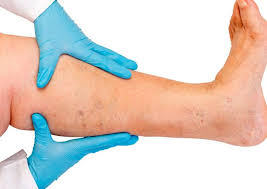

Symptoms
Most patients who are suffering from Peripheral vascular disease (PVD) may feel cramping and pain in the muscles of the lower leg. The patients feel the pain mostly when they are walking, and the pain just stops when they are not moving. This condition is called intermittent claudication. If the case is very serious, the patient may even feel pain during resting time. The most serious situation of Peripheral vascular disease (PVD) is when the body starts to form ulcers in the feet. In severe cases, it can also lead to the death of the skin, known as gangrene.
Diagnosis
The first and foremost diagnosis techniques used by doctors to detect this condition mainly revolve around measuring blood pressure in your legs. The blood pressure reading is then compared to the blood pressure of your arms. This process is called an ankle/brachial index or ABI. There may be a need to capture an image of the site to determine the seriousness of the blockage of the blood vessels. This procedure is called an Angiogram, and it is performed by using medical imaging techniques like MRI and CT. Your doctor may also use digital subtraction angiography (DSA) to diagnose PVD. In this process, a contrast dye is inserted directly in your blood vessels, and its flow is recorded.
Treatment
One of the first treatments for Peripheral vascular diseases will be based on your lifestyle, and then managing the risk factors like controlling diabetes, walking programs, and stopping smoking.
If there is a scenario in which these treatments are not working, there will be a need to open the blockage invasively. Minimally invasive treatment options are also present. These treatments are called endovascular approaches. In this approach, a tiny balloon and a stent is used to restore the flow of blood by making a very small hole in the artery. The other option is surgery, in which there will be a clearing of blockage from the artery. The surgical process is known as endarterectomy, and it uses prosthetic material or vein section to bypass the blocked area and ensure continuous blood flow.
Dr Nikolas Charalambous is named among the most prominent interventional radiologist. Get a free consultation for a minimally invasive treatment of brain, neck, and spine.